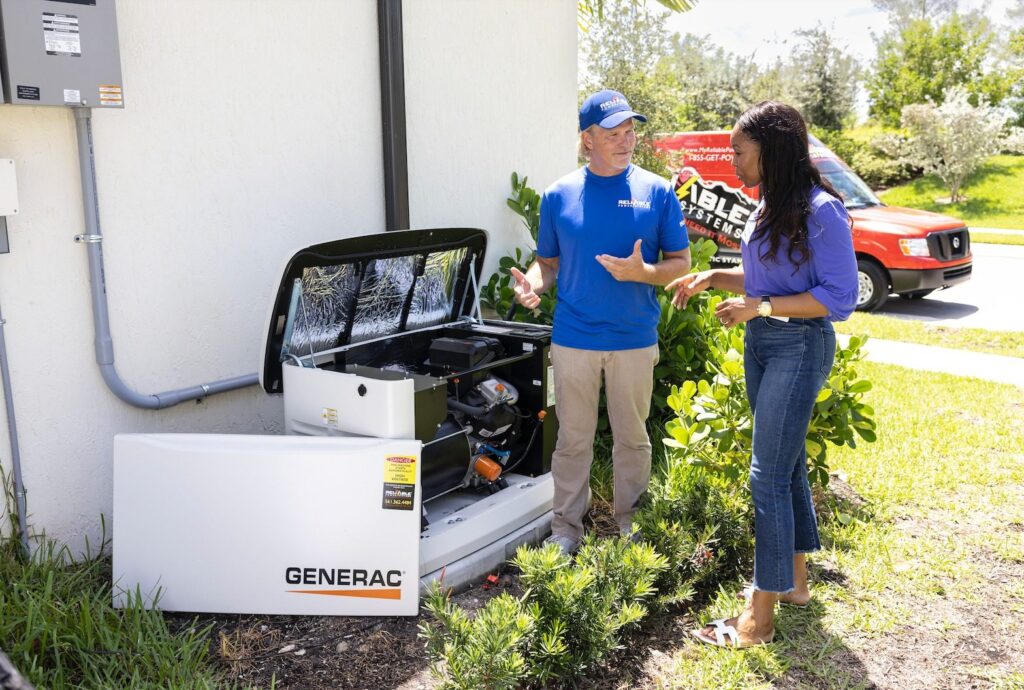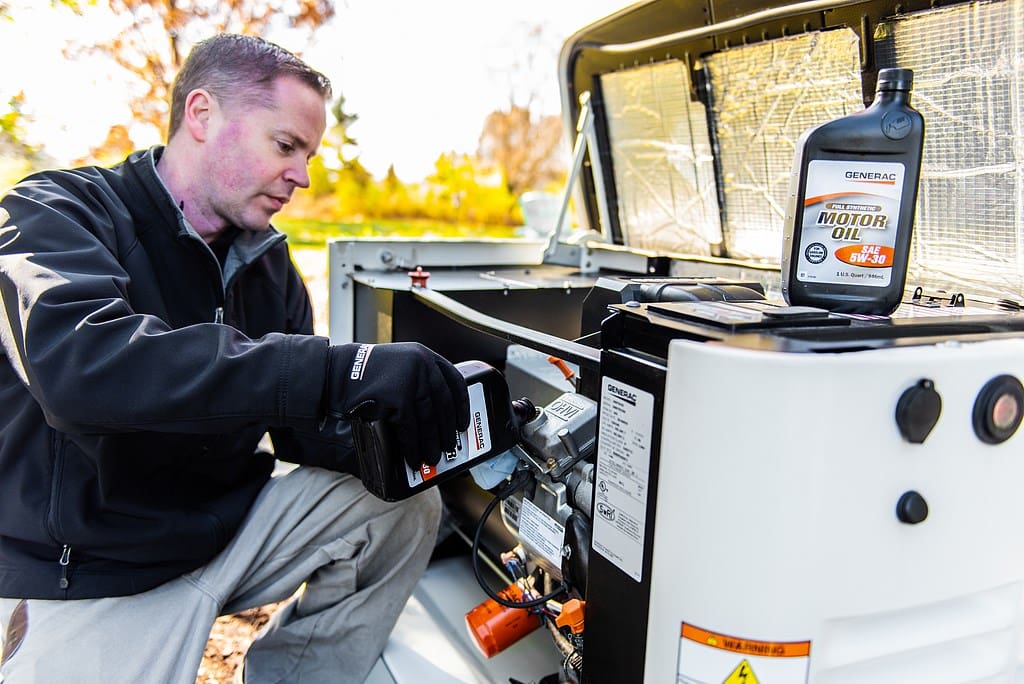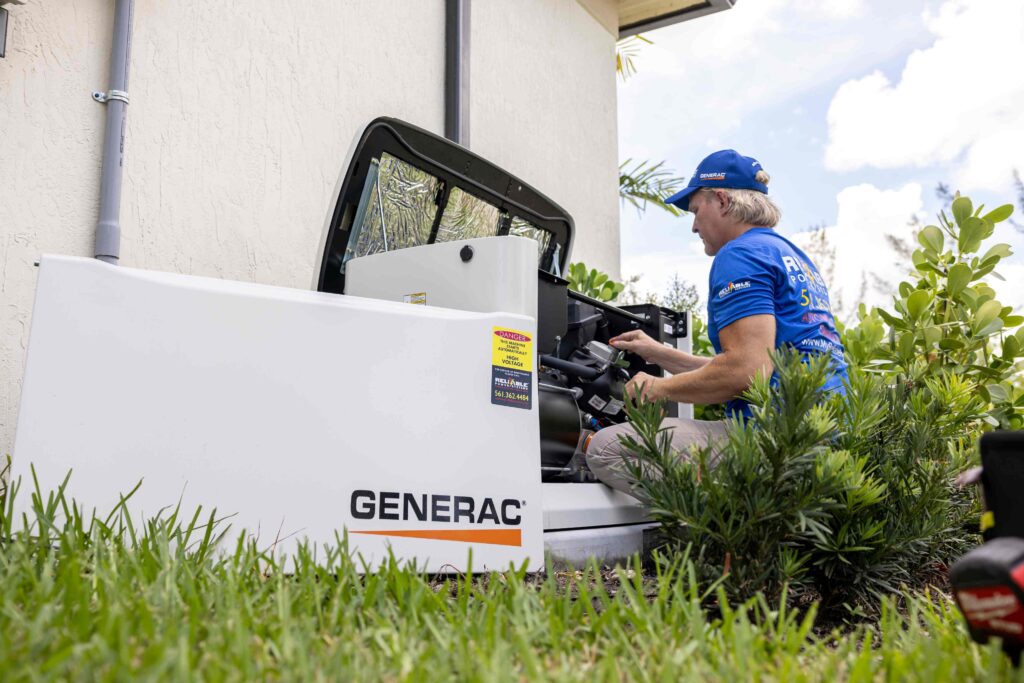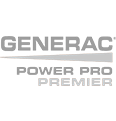
Picking out a generator for your home or business is not the simplest shopping choice. There are plenty of factors to consider, such as the amount of power needed to supply your property and the fuel necessary to run the generator. Luckily, there is no need to worry because this generator sizing guide provides the information you need to make a well-informed investment.
How Do I Choose the Correct Size Generator for My Home or Business?
Choosing the right generator begins with understanding what unit class you need: residential or commercial. For a residential-class generator, recreational units can run anywhere from less than 2kW-2000 watts, and whole-house generators can run up to 50kW (Kilowatts). These units provide a single-phase current with enough power for smaller appliances and equipment.
Alternatively, commercial-class generators start around 20kW and can reach over 3MW (Megawatts), providing the power needed for large-scale business spaces like shopping malls and office buildings. When you know which generator class you need, you can start narrowing down your size choices.
Steps for Sizing a Generator
Trying to size a generator for your home or business might sound like one big decision you have to make, but in reality, it comes down to lots of smaller ones. To find the right size generator, you must understand what you want powered and how much wattage is required. This will help you determine the loading size you need from your generator. Read on to understand the step-by-step process of finding the best size generator for your home or business.
1. Investing in a Single Generator or Paralleling
The first step in finding the correct size generator is understanding whether your needs are met with a single generator or by paralleling. Paralleling refers to splitting the electrical supply between multiple smaller generators rather than one large unit. The decision comes down to factors such as:
- Flexibility: A singular generator can provide you with a stable power supply, but if it breaks down, you’re out of luck. Paralleling allows for the powering to be switched between generators if one isn’t functioning.
- Practicality: A single generator can be oversized, dominating your home or business space. Paralleling allows for better space usage between compact units.
- Lifespan: Intensive usage can wear down a single generator. Paralleling allows the risk of overbearing as it cuts the usage between the units.
- Cost-Savings: This all depends on how much use you get from the unit. For example, single generators that use diesel engines become much more expensive when you try to get larger and larger in size.
The decision depends on your specific generator needs. Homeowners typically benefit from having a single, powerful backup generator that meets their requirements. In contrast, commercial businesses might find it more advantageous to use parallel generators. This approach not only serves as a safety net in case one generator fails, but it also saves you money by avoiding the need for larger, more expensive units.

2. Generator Fuel Consumption
If you are wondering how to size a generator, fuel is an important factor to consider. Just like bigger cars consume more fuel to drive on roads, the same can be said for bigger generators. Having large generators means frequent refueling, which also means having the necessary fuel ready whenever the tank runs empty.
For homeowners trying to find the perfect generator, it’s best to lean towards getting a small-scale unit or standby generator that meets your exact needs. That way you can limit how much you’re spending on fuel. For business owners leaning towards bigger sizes, it’s best to determine how much fuel your generator burns at certain load amounts so you have the right amount needed for refueling purposes.
3. Calculate the Generator Load Size
Sizing a generator begins with finding the items or equipment you need the generator to power. Once you identify those items, you have to find the starting and running wattage, which is typically written on the item or found in the owner’s manual. These numbers indicate the amount of energy the item needs to turn on and operate. Here are some examples:
- Dishwasher: (Starting Load- 1450W)/(Running Load- 1400W)
- Printer: (Starting Load- 500W)/(Running Load-500W)
- Router: (Starting Load- 1500W) (Running Load- 600W)
Combining these two units will provide you with the total wattage required for the piece of equipment.
Read More: Top Steps to Follow to Prepare Your Backup Generator for a Storm
4. Converting kW to kVA
Adding the total wattage of all your items gives you the total power requirement which is recorded in kilowatts (kW). This is the unit used for the actual power utilized by the generator load.
The generator itself is rated in the unit kilo-volt-amperes or kVA. This is the measure of apparent power, which is the total power being used by the system. Both of these measuring units are important because they denote the system’s efficiency. A 100% efficient system will have a kW equal to the kVA.
Energy efficiency is defined by a power factor number between 0 and 1. While a 100% efficient system is not possible, international standards rate generators with a power factor of 0.8. Keep that number in mind as it’s essential to find the matching size of a load to a generator. Here’s an example:
You have a total wattage of 120 kW, divide that by the power factor of a generator (0.8). It equals the apparent power that the minimum size of the generator needs to create. In this case, you need a minimum-size generator that produces at least 150 kVA.
- Formula: 120 kW/ 0.8 =150kVA
5. Determine Running Requirements
The next step is to determine what the generator will run as: your primary power source or a standby supply. If you use your generator as your main power source, it shouldn’t run at its maximum capacity for more than 30 minutes. That’s why it’s best to size your generator around 70%-80% capacity, as this allows leeway for any future power requirements and offers much better performance.
6. Audit Site Conditions and Access
When you know your load size and running requirement, you’ll have a firm understanding of how much electrical input you need from your generator. The next step to sizing a new generator is understanding if these requirements are possible with your current location and conditions.
For a generator to be delivered and offloaded, it requires enough site access and room to maneuver around. This can also affect the amount of space you have for certain generator sizes. If you’re in a location that’s narrow or at a higher elevation such as uphill, the vehicle bringing the generator might not be able to access the site. Additionally, if there’s not enough space, any equipment needed to offload and position the generator will be unable to do so.
Before having a generator installed, it’s always best to get a second opinion from a professional electrician. Our team of professionals will provide a consultation to help you understand your property layout and the best steps to take regarding installation.

Why Generator Sizing Is Important
You may wonder, “Why is generator sizing such a big deal?” Because generators have an important role in providing power to your home or business. Having a properly sized unit allows for the best performance and fuel usage. It also keeps your unit working properly for years. When the unit is too large or too small, you open up your generator and electrical system to a host of problems.
What Issues Can Be Caused by an Oversized Generator?
An oversized generator can cause issues such as:
- Wasted Energy: Low-capacity generators burn off more and more fuel than is needed for power production, making them much more costly to run.
- Higher Maintenance Needs: When underloaded, a generator has problems such as carbon buildup, requiring more generator maintenance or generator repairs to restore function.
- Risk of Damage: Oversize units might not be able to regulate their voltage, which can directly damage sensitive electronics in your business or home.
What Issues Can Be Caused by an Undersized Generator?
When you have an undersized generator, you’ll have problems crop up like:
- Overheating: Units that are too small will overcompensate for powering multiple items or equipment. The added strain can cause the generator to overheat or become damaged over time.
- Insufficient Power: When too small, the amount of power produced might not be enough for environments like commercial businesses.
- Limited Usage: Undersized generators might only provide power enough to run smaller electronics or devices. Anything larger like security systems will lack the power they need to function.
Read More: Can Rain and Moisture Damage a Generator?
Calculating Electrical Requirements for Commercial Properties
To avoid the potential problems that improper-size generators can bring, it’s best to calculate what your commercial property’s electrical needs are. The best way of doing so is by creating a list of the primary items you want backed up by your generator. While these priorities can vary drastically depending on the business, a good guide to follow includes:
- Retail Establishment: Primary items to focus on should be any payment terminals for customers, lights to keep the space illuminated, any security systems, and data servers containing critical information.
- Office Building: You’ll want to focus on keeping the lights on, any telecommunication methods, and security systems. It’s also best for emergency purposes to have basic systems backed up so anyone inside can evacuate safely.
- Restaurant: The key focus here is any system to keep your food from spoiling. This includes backup systems for refrigeration, appliances, and your HVAC units.
- Healthcare Facility or Clinic: Prioritize powering any machine/equipment needed for life-saving purposes. This could include machines for dialysis or to assist with breathing.

Professional Backup Generator Installation Services in South Florida
Once you’ve made your way through this guide, you will come out knowing how to correctly size a generator for your home or business. The next thing you need to figure out is who will install it.
Leave all your generator needs in the hands of the trusted electricians from Reliable Power Systems. Our electricians perform comprehensive backup generator installation and replacement services across South Florida. Whether it’s installing a brand new unit for your business or replacing your home’s old system, our team performs the job with precision and unrivaled workmanship.
Our staff also provides extensive generator repair services in Fort Lauderdale, Florida and the surrounding areas. With the highest quality equipment available and years of expertise backing us up, we’re ready to provide the backup power you need to keep the lights on. Call or schedule an appointment online, and experience the Reliable difference today.











